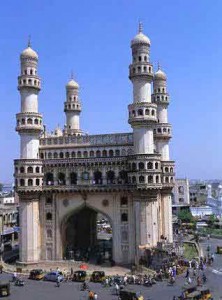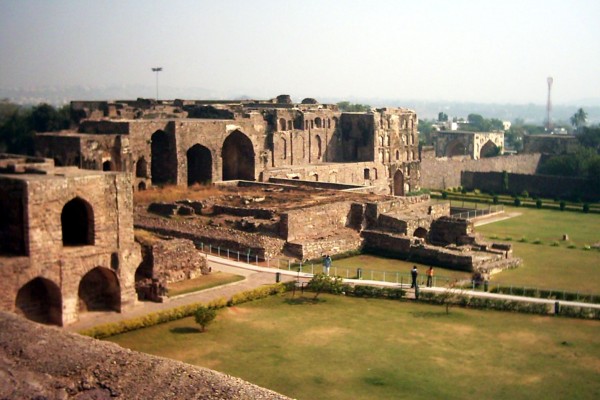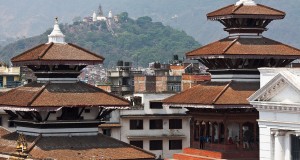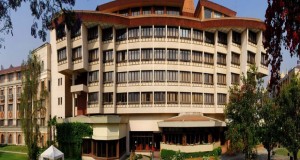Capital of Andhra Pradesh, Hyderabad is a beautiful city surrounded by lakes of great charm and tranquillity, and is itself sometimes known as ‘The Lake’. It was founded in the late-16th century by the Qutb Shahi dynasty, a line of Muslim rulers famed for their magnificent monuments and mosques. The city was laid out in 1591 by Mohammed Quli when Golconda, the fortress city from which the Muslim rulers had ruled their Hindu subjects since 1512, fell prey to epidemics of plague and cholera, caused by poor water supplies. It was planned out on the grid system, and comprised two broad intersecting streets with the famous central Charminar Arch (described as the outstanding architectural monument of the Qutb Shahi period) at the crossing, and space for some 14 000 shops, schools, mosques and baths.
water supplies. It was planned out on the grid system, and comprised two broad intersecting streets with the famous central Charminar Arch (described as the outstanding architectural monument of the Qutb Shahi period) at the crossing, and space for some 14 000 shops, schools, mosques and baths.
Successful trading in diamonds, pearls, printed fabrics and steel rapidly made Hyderabad one of the richest cities in India. Then, in 1650, the Mughal emperor Aurangzeb captured Golconda, and Hyderabad’s short period of prosperity came to an abrupt end. Its importance as an administrative and financial centre declined, and the city fell into partial ruin. In the 18th century, with the disintegration of the Mughal empire, the Mughal Viceroys or Nizams of the Deccan seized power and in 1763 Hyderabad again became the capital of the area (under the Mughal , power had been wielded from Aurangabad). Commerce and construction rapidly resumed, and the city once more became a major business concern. The Nizams soon became some of the wealthiest individuals in the world, a position they maintained right up to, and for a decade beyond Independence in 1947.
Today, while Hyderabad, together with Bangalore, is the fastest-growing city in Asia, it has yet to find itself as a tourist centre. Its obvious attractions, its beautiful sights, good shopping, unique cuisine are largely offset by its remote location. But you can expect big changes in the near future. Hyderabad is rapidly equipping itself with tourist facilities, luxury hotels, better transport, shopping complexes, even a Rs100 crore Disneyland project around the Hussain Sagar lake—and is now patiently awaiting the expected boom.
Situated 610 m above sea-level, Hyderabad has a very equable climate through much of the year. The coolest (best) time to visit is from October to February. From March onwards, it is not so much the heat as the very dry air that has visitors reaching for the water bottle.
ARRIVAL/DEPARTURE
Indian Airlines offers daily flights between Hyderabad and Bangalore (Rs1083), Bombay (Rs1398), Calcutta (Rs2538), Delhi (Rs2362) and Madras (Rs1106); less frequent flight connections with Bhubaneshwar (Rs1796), Nagpur (Rs1058), Trivandrum (Rs1083) and Visakhapatnam (1129). Vayudoot connects Hyderabad with Pune. Hyderabad’s airport is some 10 km (6 1/4 miles) from the city centre; a Rs25 auto-rickshaw ride Rif you persuade your driver to set his meter to zero before setting off!
Rail
Trains to and from the south use Hyderabad Station while those from the north, the west and east use Secunderabad Station. This is where you will arrive if you come from Madras (510 km: 319 miles). For southern-bound trains to Bangalore (the 3 pm Hyderabad-Bangalore Express, arriving 7.30 am, is best) you can board at Hyderabad rail station in Abids area. Advance-reservation is essential for all long-hauls.
Road
From Hyderabad’s central bus depot, Gowliguda Rd, there’s one state bus daily to Madras (708 km; 15 hours) and to Bombay (739 km; 17 hours); plus 3/8 buses daily ! to Bangalore (566 km). The above destinations, together with places like Aurangabad (599 km) and Hospet, are also handled by private bus companies. You can and should advance-reserve seats.





